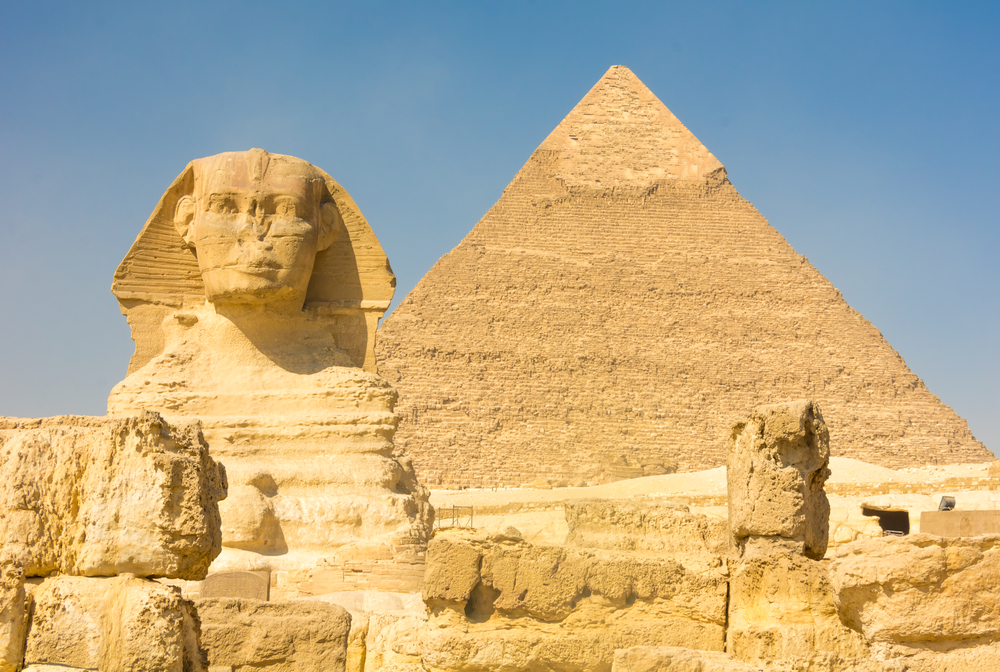
First rule: There are no rules. These resources are completely free and at your disposal. Use as much, or as little, as you want. Study casually, or work to create a portfolio of academic work that will blow the socks off of the educational establishment.
Feel free to adapt the materials for your own purposes. We expect families, business people, backpackers, college students, high school kids, middle aged vacationers, and retirees who are on a late life adventure to take these materials and run with them. We’d be very happy for teachers or travel group leaders to add these materials to their study abroad packets as well.
The nature of open source is collaboration, so please feel free to contribute when you become aware of resources we haven’t listed, or you have project ideas that we haven’t developed. Send us your work and inspire others to reach higher and deeper as they travel!
Our goal with this project is to inspire adventure and further education through experiential learning around the world. Please send us a note and let us know how you used these resources!
Buffet Style Learning
Does the menu look overwhelming? Looking for a formula to use as a skeleton for your studies in Egypt?
Choose:
- Two books
- Two films
- Three articles
- One Problem & Solution or Project Option
- One Cultural Assignment
Table of Contents
- Books
- Books for Kids
- Films
- Articles
- Project Options
- Problems & Solutions
- Cultural Assignments
- Create Your Own Coursework
Book Recommendations
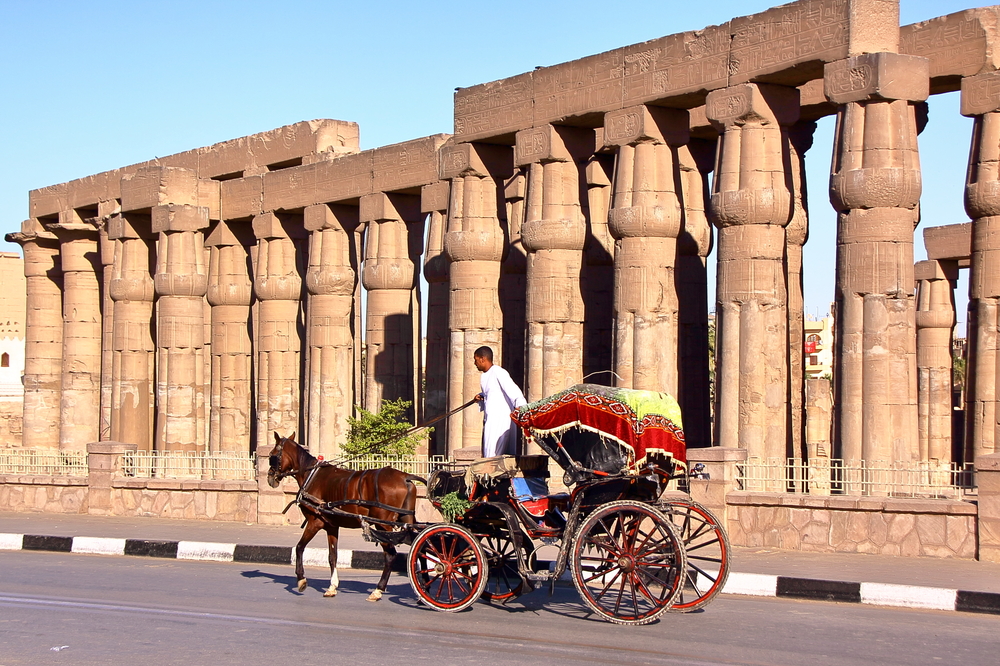
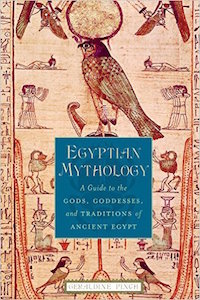 Egyptian Mythology: A Guide to the Gods, Goddesses, and Traditions of Ancient Egypt
Egyptian Mythology: A Guide to the Gods, Goddesses, and Traditions of Ancient Egypt
by Geraldine Pinch
From stories of resurrected mummies and thousand-year-old curses to powerful pharaohs and the coveted treasures of the Great Pyramids, ancient Egypt has had an unfaltering grip on the modern imagination. Now, in Egyptian Mythology, Geraldine Pinch offers a comprehensive introduction that untangles the mystery of Egyptian Myth.
Spanning Ancient Egyptian culture–from 3200 BC to AD 400–Pinch opens a door to this hidden world and casts light on its often misunderstood belief system. She discusses the nature of myths and the history of Egypt, from the predynastic to the postpharaonic period. She explains how Egyptian culture developed around the flooding of the Nile, or the “inundation,” a phenomenon on which the whole welfare of the country depended, and how aspects of the inundation were personified as deities. She explains that the usually cloudless skies made for a preoccupation with the stars and planets. Indeed, much early Egyptian mythology may have developed to explain the movement of these celestial bodies. She provides a timeline covering the seven stages in the mythical history of Egypt and outlining the major events of each stage, such as the reign of the sun God. A substantial A to Z section covers the principal themes and concepts of Egyptian mythology as well as the most important deities, demons, and other characters.
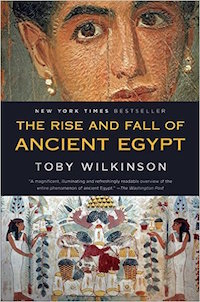 The Rise and Fall of Ancient Egypt
The Rise and Fall of Ancient Egypt
by Toby Wilkinson
In this landmark volume, one of the world’s most renowned Egyptologists tells the epic story of this great civilization, from its birth as the first nation-state to its absorption into the Roman Empire. Drawing upon forty years of archaeological research, award-winning scholar Toby Wilkinson takes us inside a tribal society with a pre-monetary economy and decadent, divine kings who ruled with all-too-recognizable human emotions.
Here are the legendary leaders: Akhenaten, the “heretic king,” who with his wife Nefertiti brought about a revolution with a bold new religion; Tutankhamun, whose dazzling tomb would remain hidden for three millennia; and eleven pharaohs called Ramesses, the last of whom presided over the militarism, lawlessness, and corruption that caused a political and societal decline. Filled with new information and unique interpretations, The Rise and Fall of Ancient Egypt is a riveting and revelatory work of wild drama, bold spectacle, unforgettable characters, and sweeping history.
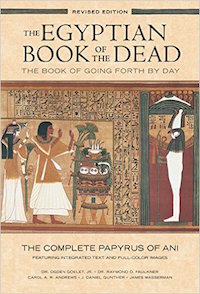 The Egyptian Book of the Dead: The Book of Going Forth by Day: The Complete Papyrus of Ani
The Egyptian Book of the Dead: The Book of Going Forth by Day: The Complete Papyrus of Ani
by Ogden Goelet & Raymond Faulkner
The Papyrus of Ani is the most beautiful, best-preserved, and complete example of ancient Egyptian philosophical and religious thought. Written and illustrated some 3,300 years ago, The Egyptian Book of the Dead is an integral part of the world’s spiritual heritage. It is an artistic rendering of the mysteries of life and death. For the first time since its creation, this ancient papyrus is now available in full color with an integrated English translation directly below each image.
This publication opens the door to one of humanity’s earliest and finest spiritual treasures. The Chronicle Books edition of The Book of Going Forth by Day was first published in 1994 and revised in 1998. This twentieth anniversary edition has been revised and expanded to include significant improvements to the display of the images of the Papyrus, a survey of the continuing importance of ancient Egypt in modern culture, a detailed history of Egyptian translation and philology since the discovery of the Rosetta Stone in 1799, and a state-of-the-art Annotated Bibliography and Study Guide for Ancient Egyptian studies.
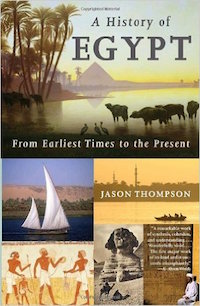 A History of Egypt: From Earliest Times to the Present
A History of Egypt: From Earliest Times to the Present
by Jason Thompson
In A History of Egypt, Jason Thompson has written the first one-volume work to encompass all 5,000 years of Egyptian history, highlighting the surprisingly strong connections between the ancient land of the Pharaohs and the modern-day Arab nation.
No country’s past can match Egypt’s in antiquity, richness, and variety. However, it is rarely presented as a comprehensive panorama because scholars tend to divide it into distinct eras—prehistoric, pharaonic, Greco-Roman, Coptic, medieval Islamic, Ottoman, and modern—that are not often studied in relation to one another. In this daringly ambitious project, drawing on the most current scholarship as well as his own research, Thompson makes the case that few if any other countries have as many threads of continuity running through their entire historical experience. With its unprecedented scope and lively and readable style, A History of Egypt offers students, travelers, and general readers alike an engaging narrative of the extraordinarily long course of human history by the Nile.
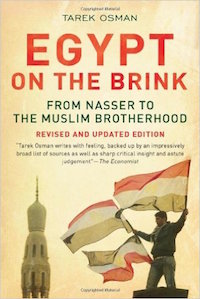 Egypt on the Brink: From Nasser to the Muslim Brotherhood, Revised and Updated
Egypt on the Brink: From Nasser to the Muslim Brotherhood, Revised and Updated
by Tarek Osman
In this immensely readable and thoroughly researched book, Tarek Osman explores what has happened to the biggest Arab nation since President Nasser took control of the country in 1954. This new edition takes events up to summer 2013, looking at how Egypt has become increasingly divided under its new Islamist government.
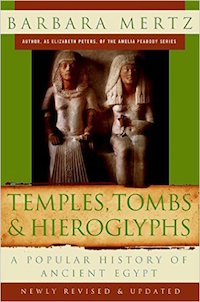 Temples, Tombs, and Hieroglyphs: A Popular History of Ancient Egypt
Temples, Tombs, and Hieroglyphs: A Popular History of Ancient Egypt
by Barbara Mertz
A fascinating chronicle of an extraordinary people—from the first Stone Age settlements through the reign of Cleopatra and the Roman invasions—Temples, Tombs, and Hieroglyphs brings ancient Egypt to life as never before.
Lavishly illustrated with pictures, maps, and photographs, it offers tantalizing glimpses into Egyptian society; amazing stories of the pharaohs and the rise and fall of great dynasties; a sampling of culture, religion, and folklore; stories of explorers, scientists, and scoundrels who sought to unravel or exploit the ageless mysteries; and new insights into the architectural wonders that were raised along the banks of the Nile.
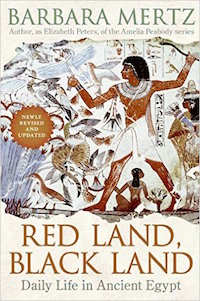 Red Land, Black Land: Daily Life in Ancient Egypt
Red Land, Black Land: Daily Life in Ancient Egypt
by Barbara Mertz
Internationally renowned Egyptologist Barbara Mertz transports us back thousands of years and immerses us in the sights and sounds of day-to-day life in a vanished desert culture.
Their civilization has inspired myriad films, books, pieces of art, myths, and dreams, and they built grand monuments that still stagger the imagination five thousand years later. But who were these people? Mertz ushers us into their homes, workplaces, temples, and palaces to give us an intimate view of the everyday worlds of royals and commoners alike.
Displaying the unparalleled descriptive power, unerring eye for detail, keen insight, and trenchant wit that have made the novels she writes (as Elizabeth Peters and Barbara Michaels) perennial New York Times best-sellers, Barbara Mertz brings a buried civilization to vivid life, taking us closer than ever before to the people of a great lost culture so different from—yet so surprisingly similar to—our own.
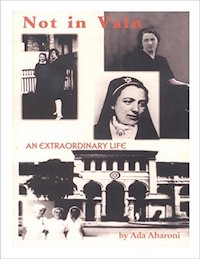 Not in Vain: An Extraordinary Life
Not in Vain: An Extraordinary Life
by Ada Aharoni
A MODEL IN ACTION FOR ALL WOMEN, A LESSON IN PEACE FOR ALL TIME. This is a book about the Second World war in Egypt, and about the Levant at its best. “It is a real message of peace between Jews and Arabs. I highly recommend it.” SHIMON PERES, Former President of Israel.
“This book gently draws us into the life of Thea Woolf and into the world of this Jewish nurse who lived and worked in Alexandria, Egypt during World War II. She was born in Germany and trained to be a nurse there. She then served as a nurse in the Jewish hospital in Alexandria for many years. Being in Egypt before and during the war years not only saved her life but also thrust her into a leading role of helping Jewish refugees who came to or through Egypt in their attempt to escape the holocaust.
She relates several stories of people who took part in this fight to save so many lives. These stories are both tragic and uplifting. We discover that Muslims as well as Jews worked together for this cause, that for these caring people human life was more important to them than any religious differences.” -Amazon Review
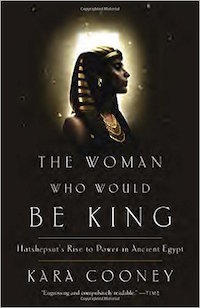 The Woman Who Would Be King: Hatshepsut’s Rise to Power in Ancient Egypt
The Woman Who Would Be King: Hatshepsut’s Rise to Power in Ancient Egypt
by Kara Cooney
Hatshepsut—the daughter of a general who usurped Egypt’s throne and a mother with ties to the previous dynasty—was born into a privileged position in the royal household, and she was expected to bear the sons who would legitimize the reign of her father’s family. Her failure to produce a male heir was ultimately the twist of fate that paved the way for her improbable rule as a cross-dressing king. At just over twenty, Hatshepsut ascended to the rank of pharaoh in an elaborate coronation ceremony that set the tone for her spectacular reign as co-regent with Thutmose III, the infant king whose mother Hatshepsut out-maneuvered for a seat on the throne. Hatshepsut was a master strategist, cloaking her political power plays in the veil of piety and sexual reinvention. Just as women today face obstacles from a society that equates authority with masculinity, Hatshepsut shrewdly operated the levers of power to emerge as Egypt’s second female pharaoh.
Hatshepsut successfully negotiated a path from the royal nursery to the very pinnacle of authority, and her reign saw one of Ancient Egypt’s most prolific building periods. Scholars have long speculated as to why her monuments were destroyed within a few decades of her death, all but erasing evidence of her unprecedented rule. Constructing a rich narrative history using the artifacts that remain, noted Egyptologist Kara Cooney offers a remarkable interpretation of how Hatshepsut rapidly but methodically consolidated power—and why she fell from public favor just as quickly. The Woman Who Would Be King traces the unconventional life of an almost-forgotten pharaoh and explores our complicated reactions to women in power.
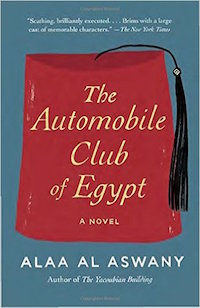 The Automobile Club of Egypt
The Automobile Club of Egypt
by Alaa Al Aswany
In British-occupied Egypt, on the eve of the 1952 revolution, respected landowner Abd el-Aziz Gaafar has fallen on hard times. Bankrupt, he moves his family to Cairo and takes a menial job at the Automobile Club, a luxurious lodge for its European members, where Egyptians appear only as fearful servants. When Abd el-Aziz’s pride gets the better of him and he stands up for himself, he is subjected to a corporal punishment that ultimately kills him—leaving two of his sons obliged to work in the Club.
As the nation teeters on the brink of change, both servants and masters are subsumed by social upheaval, and the Egyptians of the Automobile Club face a choice: to live safely but without dignity as servants, or to risk everything and fight for their rights. Exuberant and powerfully moving, The Automobile Club of Egypt is an essential work of social criticism from one of the Arab world’s greatest literary voices.
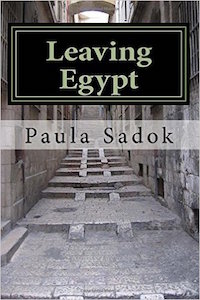 Leaving Egypt
Leaving Egypt
by Paula Sadok
This multi-generational novel traces the history of a Middle Eastern Jewish family from its roots in Aleppo, Syria through its establishment in Cairo, Egypt, and finally to its resettling in New York in the aftermath of Egypt’s revolution in 1952. Sarah, her daughter Marcelle, and her daughter’s daughter Lauren, each struggle with the legacy of their family and culture while trying to find their own identities as women.
Leaving Egypt explores the complex negotiations immigrants face as they struggle to set down roots in an unfamiliar place, the way we are all irrevocably shaped by politics and events beyond our control, and the powerful and complex bonds between mothers and daughters.
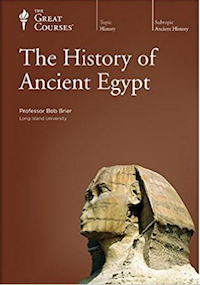 The Great Courses: The History of Ancient Egypt
The Great Courses: The History of Ancient Egypt
by The Great Courses – Bob Brier
Ancient Egyptian civilization is so grand our minds sometimes have difficulty adjusting to it. It lasted 3,000 years, longer than any other on the planet. Its Great Pyramid of Cheops was the tallest building in the world until well into the 19th century and remains the only Ancient Wonder still standing. And it was the most technologically advanced of the ancient civilizations, with the medical knowledge that made Egyptian physicians the most famous in the world. Yet even after deciphering its hieroglyphs, and marveling at its scarabs, mummies, obelisks, and sphinxes, Egyptian civilization remains one of history’s most mysterious, as “other” as it is extraordinary.
This chronological survey presents the complete history of ancient Egypt’s three great Kingdoms: the Old Kingdom, when the pyramids were built and Egypt became a nation under the supreme rule of the pharaoh and the rules of Egyptian art were established; the Middle Kingdom, when Egypt was a nation fighting to restore its greatness; and the New Kingdom, when all the names we know today-Hatshepsut, Tutankhamen, Ramses the Great, Cleopatra, and others-first appeared. Professor Brier’s 48 lectures glisten with the kind of vivid anecdotes and human glimpses that make this ancient world breathe again.
“The fun of history is in the details,” he notes. “Knowing that Ramses the Great was crippled by arthritis for the last decade of his long life makes us more sympathetic to the boastful monarch who fathered more than 100 children. If we understand what it was like to be a miner sent to the turquoise mines in the Sinai mountains in the summer, we will feel a kinship with our long-dead counterparts.”
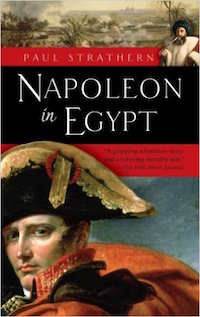 Napoleon in Egypt
Napoleon in Egypt
by Paul Strathern
In 1798, Napoleon Bonaparte, only twenty-eight, set sail for Egypt with 335 ships, 40,000 soldiers, and a collection of scholars, artists, and scientists to establish an eastern empire. He saw himself as a liberator, freeing the Egyptians from oppression. But Napoleon wasn’t the first—nor the last—who tragically misunderstood Muslim culture. Marching across seemingly endless deserts in the shadow of the pyramids, pushed to the limits of human endurance, his men would be plagued by mirages, suicides, and the constant threat of ambush.
A crusade begun in honor would degenerate into chaos. And yet his grand failure also yielded a treasure trove of knowledge that paved the way for modern Egyptology—and it tempered the complex leader who believed himself destined to conquer the world.
Kids Book Recommendations
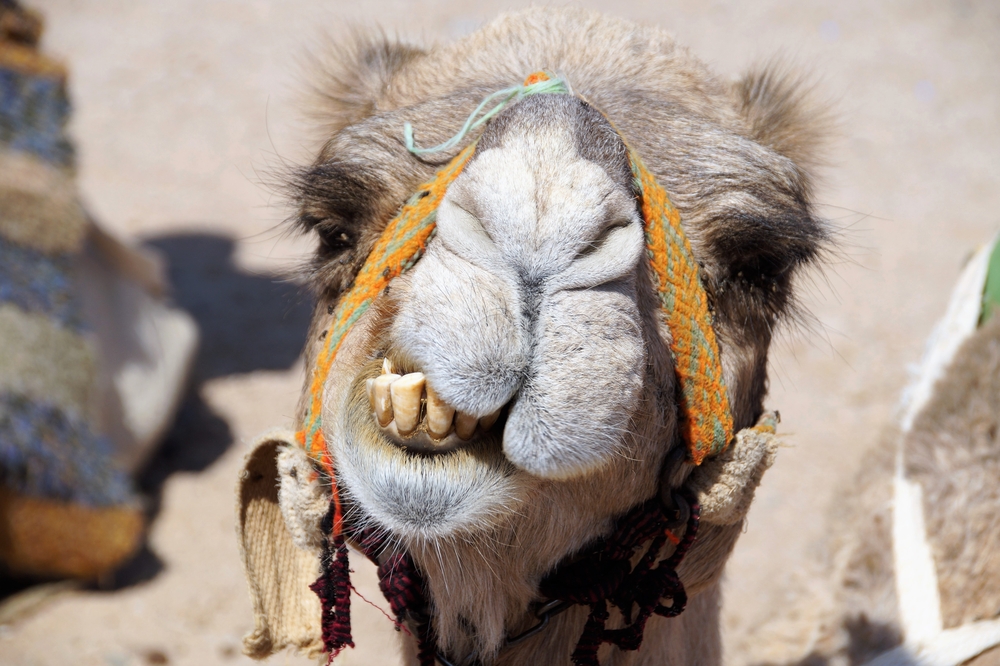
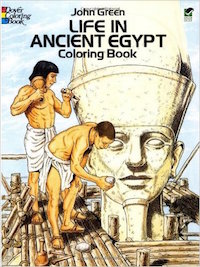 Life in Ancient Egypt Coloring Book
Life in Ancient Egypt Coloring Book
by John Green
Magnificent pyramids, the silent Sphinx, gigantic temples of stone, a land and people shrouded by the mists of time. Here’s a subject that promises to captivate coloring book enthusiasts and anyone intrigued by the life and customs of ancient Egypt.
Forty-four authentically detailed drawings by artist John Green recall the glory of a magnificent civilization — from the beginning of the dynasties (ca. 300 B.C.), through the Old, Middle, and New Kingdoms (ca. 2700–2010 B.C.), to the rule of the Ptolemies and the Roman conquest (30 B.C.)
Included are expertly drawn and well-researched full-page illustrations of Cleopatra, Ramses II, the Pharaoh Akhenaten and his beautiful wife, Nefertiti, as well as scenes depicting many aspects of Egyptian life — construction of the six-story step pyramid at Sakkara, fishing and farming along the Nile, the Sphinx and pyramids at Giza, goldsmiths and metalworkers creating elegant works of art, and more.
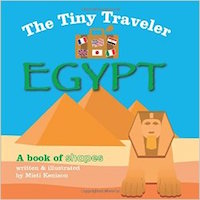 The Tiny Traveler: Egypt: A Book of Shapes
The Tiny Traveler: Egypt: A Book of Shapes
by Misti Kenison
If you’re going to learn about shapes, why not do it in the exciting land of Egypt? Egypt’s Great Sphinx, pyramids, and camels all come to life in this new board book by graphic designer Misti Kenison. Toddlers will learn basic shapes such as triangles, hexagons, and circles with bright, geometric spreads while getting a flavor for Egypt’s rich and fascinating culture. Traveling to foreign places has never been so colorful, or educational, for young children before!
Each book in Misti Kenison’s new Tiny Traveler board book series is sure to give your child the travel bug early by transporting little ones to exotic and fantastic places while teaching basic concepts—such as shapes.
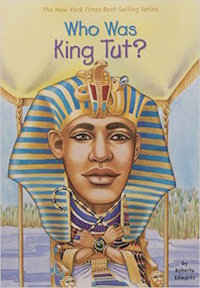 Who Was King Tut?
Who Was King Tut?
by Roberta Edwards
Ever since Howard Carter uncovered King Tutankhamun’s tomb in 1922, the young pharaoh has become a symbol of the wealth and mystery of ancient Egypt. Now, a two-and-a-half-year-long museum exhibit of Tut’s treasures is touring major cities in the U.S., drawing record crowds. This Who Was . . . ? is complete with 100 black-and-white illustrations and explains the life and times of this ancient Egyptian ruler, covering the story of the tomb’s discovery, as well as myths and so-called mummy curses.
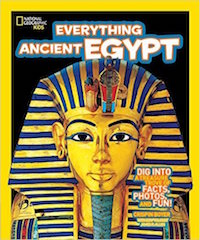 National Geographic Kids Everything Ancient Egypt: Dig Into a Treasure Trove of Facts, Photos, and Fun
National Geographic Kids Everything Ancient Egypt: Dig Into a Treasure Trove of Facts, Photos, and Fun
by Crispin Boyer
The ancient Egyptians thought big and built bigger, leaving behind monuments and messages that have endured for five millennia despite tomb robbers and the ravages of time. Pyramids and mummies tell us about their deaths, but new technologies are peeling the wraps off their mysterious lives. In Everything Ancient Egypt kids will discover all they want to know about the mysteries of ancient Egypt and learn new weird, wacky, and fascinating facts as well.
Sections in the book include Rise of the Pharaohs, Death and the Afterlife, Life in Ancient Egypt, and Fun With Ancient Egypt (a section that provides readers with exciting hands-on learning!). Stunning photos and an interactive glossary round out this exciting and engaging new series addition.
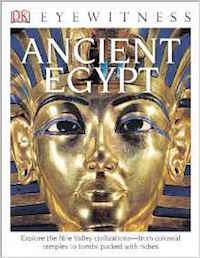 DK Eyewitness Books: Ancient Egypt
DK Eyewitness Books: Ancient Egypt
by George Hart
In Eyewitness: Ancient Egypt, travel back in time and discover one of history’s most remarkable civilizations — from the legends of the great Pharaohs to the triumphs of the ordinary people. Explore the inside of the Great Pyramid in Giza, or learn how Tutankhamun’s tomb was found. Images and supported text throughout the book showcase the pottery, weapons and other objects Ancient Egyptians left behind, the architecture they created, the food they ate, their system of Hieroglyphic writing, and more, giving an eyewitness account of this incredible empire.
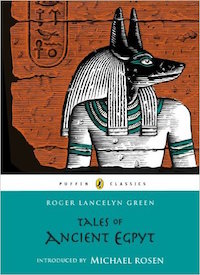 Tales of Ancient Egypt
Tales of Ancient Egypt
by Roger Lancelyn Green
These stories include the great myths – of Amen-Ra, who created all the creatures in the world; of Isis, seaching the waters for her dead husband Osiris; of the Bennu Bird and the Book of Thoth. But there are also tales told for pleasure about magic, treasure and adventure – even the first ever Cinderella story.
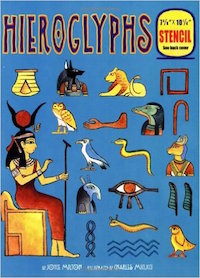 Hieroglyphs
Hieroglyphs
by Joyce Milton
Ancient Egypt is a subject of never-ending fascination for primary grade kids. Here they learn all about hieroglyphs, the beautiful pictogram writing that appears on mummy cases, papyrus scrolls, tomb walls, etc. What do the different symbols mean? How did we learn to decipher hieroglyphs? What was school and learning to read and write like for children of ancient Egypt? The information is accessible and fascinating, plus kids have the fun of creating hieroglyph messages and “works of art” using the accompanying stencil.
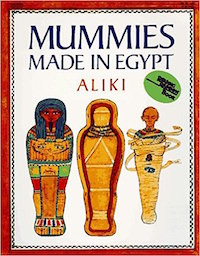 Mummies Made in Egypt
Mummies Made in Egypt
by Aliki
Aliki describes and illustrates the techniques and the reasons for the use of mummification in ancient Egypt.
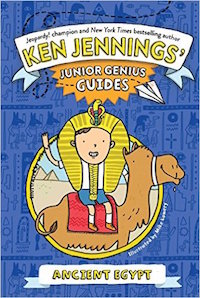 Ancient Egypt
Ancient Egypt
by Ken Jennings
With this book about ancient Egypt, you’ll become an expert and wow your friends and teachers with awesome ancient facts: Did you know that some Egyptians used to shave their eyebrows whenever a cat died? Or that some people worshiped a god of lettuce? With great illustrations, cool trivia, and fun quizzes to test your knowledge, this guide will have you on your way to whiz-kid status in no time.
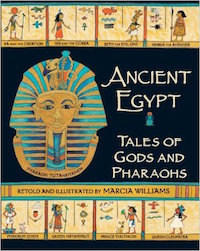 Ancient Egypt: Tales of Gods and Pharaohs
Ancient Egypt: Tales of Gods and Pharaohs
by Marcia Williams
The stories of the Egyptian pharaohs and their ancient gods are full of mystery and adventure. In this retelling of nine tales of ancient Egypt, Marcia Williams uses her signature comic-strip style to capture the rich mythology and early history of this great civilization.
Beginning with powerful Ra rising from the waters of the Nile to create the gods of the earth, sky, and rain, Ancient Egypt takes readers through the curse of King Tut’s tomb and the rise of Cleopatra– with Rami, Ra’s beloved cat, highlighting Egypt’s many cultural and technological advances along the way. An instantly engaging, accessible introduction to an ancient civilization, this collection of stories is sure to fascinate and inspire young Egyptologists.
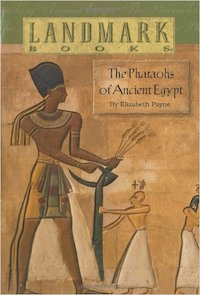 The Pharaohs of Ancient Egypt
The Pharaohs of Ancient Egypt
by Elizabeth Payne
For more than 3,000 years, Egypt was a great civilization that thrived along the banks of the Nile River. But when its cities crumbled to dust, Egypt’s culture and the secrets of its hieroglyphic writings were also lost.
The Pharaohs of Ancient Egypt explains how archaeologists have pieced together their discoveries to slowly reveal the history of Egypt’s people, its pharaohs, and its golden days.
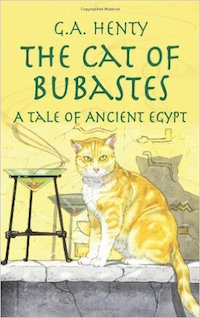 The Cat of Bubastes: A Tale of Ancient Egypt
The Cat of Bubastes: A Tale of Ancient Egypt
by G.A. Henty
Chebron, the young son of an Egyptian high priest, and Amuba, a young slave in the boy’s household, are close friends; but their lives are greatly altered when Chebron accidentally kills a cat, an animal held sacred by the ancient Egyptians. Forced to flee for their safety, the boys and their companions begin a long and dangerous journey.
A thrilling adventure story, this is also a tale packed with historical facts. Among other fascinating details, young readers learn about the Egyptian religion and geography, how the Nile was used for irrigation, and how the Egyptians made war and were prepared for burial. A captivating book that accurately describes life in a once magnificent civilization, this volume will especially appeal to youngsters fascinated by the life and customs of ancient Egypt.
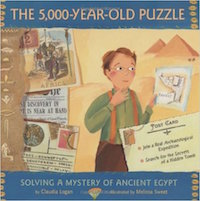 The 5,000-Year-Old Puzzle: Solving a Mystery of Ancient Egypt
The 5,000-Year-Old Puzzle: Solving a Mystery of Ancient Egypt
by Claudia Logan
It is 1924, two years after the discovery of King Tut’s tomb. Readers are invited to join a young boy, Will Hunt, as he and his family become part of an archaeological team led by world-famous Egyptologist Dr. George Reisner. Based on actual records of Reisner’s history-making dig, Giza 7000X, this strikingly original picture book uses journal entries, funny postcards, and quirky cartoons to pull readers into an ancient unsolved mystery.
Luminous paintings of the pyramids, informative sidebars and inventive collages, including authentic documents and archival photographs, help provide information and clues. When a secret tomb is uncovered, readers, along with Will, put together clues to discover: Whose tomb is this? Why was it hidden? And how can a mummy be missing from a sealed tomb?
This illuminating book invites readers to participate in the process of archaeology as it provides a rare glimpse into the true stories that exist behind the objects in museums.
The 5,000-Year-Old Puzzle is a 2003 Bank Street – Best Children’s Book of the Year.
Film Recommendations
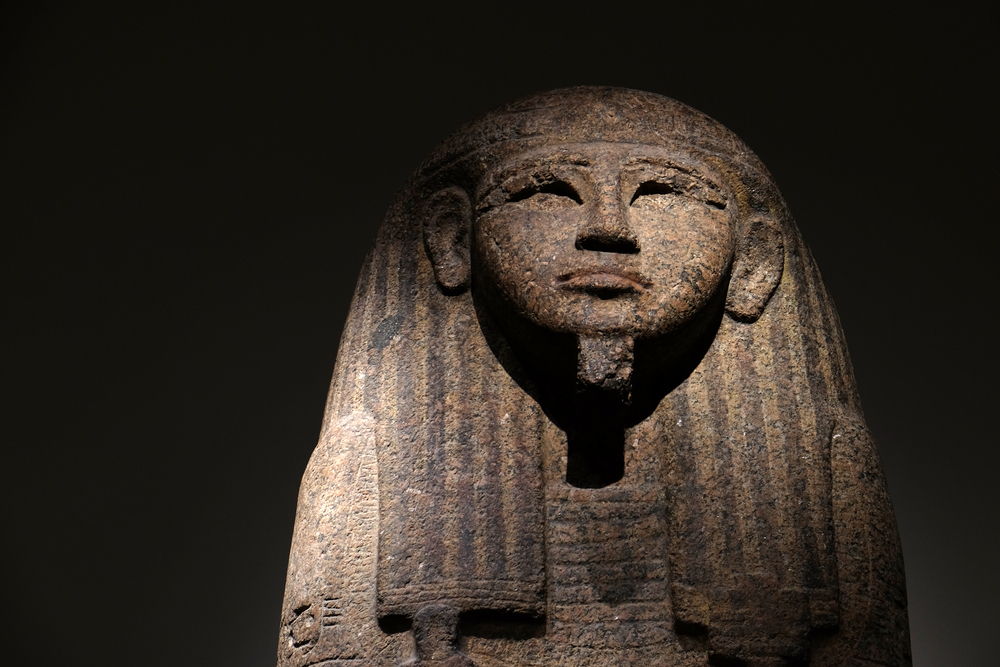
The Pyramids of Egypt – How and Why – Naked Science Documentary
Built during a time when Egypt was one of the richest and most powerful civilizations in the world, the pyramids—especially the Great Pyramids of Giza—are some of the most magnificent man-made structures in history. Their massive scale reflects the unique role that the pharaoh, or king, played in ancient Egyptian society.
Though pyramids were built from the beginning of the Old Kingdom to the close of the Ptolemaic period in the fourth century A.D., the peak of pyramid building began with the late third dynasty and continued until roughly the sixth (c. 2325 B.C.). More than 4,000 years later, the Egyptian pyramids still retain much of their majesty, providing a glimpse into the country’s rich and glorious past.
The Great Queens of Ancient Egypt
Queen Nefertiti
The Great Egyptians – Episode 1: King of the Pyramids
This epic series explores the lives of some of Egypt’s greatest rulers: Ramses the Great, pyramid pioneer King Sneferu, the most famous woman who ever lived, Cleopatra, the rebel heretic Akhenaten, the ill-fated Tutankhamen and feminist trailblazer Hatshepsut. Hosted by renown Egyptologist Dr. Bob Brier, this series unveils the true stories of their battles, loves, obsessions, preoccupations and deaths. Brier guides viewers on an enlightening quest for answers to the mysteries surrounding the legacies of the pharaohs. Spectacular footage and unique information make this series a perfect guide to the history of ancient Egypt.
The Great Egyptians – Episode 2: The Real Cleopatra
EPISODE 2: THE REAL CLEOPATRA
How did a Greek without a drop of Egyptian blood become one of the most famous Egyptians of all time? Part 2, “The Real Cleopatra”, takes you back to Alexander the Great, who established Egypt’s Ptolemaic dynasty into which Cleopatra was born. Explore the true source of her beguiling power and her intelligence symbolized by her restoration of the magnificent library at Alexandria. Cleopatra’s role as ruler, mother, and consort are examined, revealing a woman very different from her reputation as cruel and promiscuous. Relive her final, dramatic days after Mark Antony’s defeat at Actium, and discover her lasting influence on the Roman Empire
The Great Egyptians – Episode 3: The Queen Who Would Be King
The topic of this episode is the queen of Egypt who became pharaoh. Hatshepsut ruled in her husband’s stead for seven years after his death. When her son, Tuthmosis III, came of age, Hatshepsut refused to step aside. She continued her rule as one of the most powerful pharaohs of all time. Until modern discoveries were made, both her son and patriarchal society successfully conspired to hide her name and achievements from future generations. With dramatic re-enactments and art works, the story of Hatshepsut is told.
The Great Egyptians – Episode 4: The Rebel Pharaoh
Host and Egyptologist Bob Brier takes the viewer on a journey back through time to the most radical pharaoh of Egyptian history, Akhenaten, who was a visionary and revolutionary. Born Amenhotep IV, he changed his name to Akhenaten to reflect his belief in Aten as a monotheistic god, rejecting the polytheistic tradition of his country. The “Rebel Pharaoh” was also an artist, who broke from the art forms of the past, creating stylized sculpture and paintings. His artworks are included in the presentation.
The Great Egyptians – Episode 5: Ramses The Great
The Great Pyramid of Egypt New Evidence
Mysterious Lost City of Ancient Egypt
Documentary following a team of maritime archaeologists as they uncover the remarkable city of Heracleion, lost to the sea and forgotten for over two thousand years.
In the fading days of the pharaohs, the city of Heracleion was the gateway to Egypt and a port beyond compare. In the 4th century BC, this was an opulent and prosperous place adorned with statues and sphinxes. It was a city of religious significance and home to the temple of Amun. In the 2nd century BC it was wiped off the face of the earth. In a mysterious subsidence, the coastline dropped by over 20ft and Heracleion was consumed by the sea. The lost city slept for centuries beneath the waters of the Mediterranean.
In 2000, archaeologists made an incredible find. Using ancient texts, they discovered the city’s remains six kilometres off the Egyptian coast and only 10 metres underwater. Pristinely preserved, it is an archaeological jewel – an ancient Egyptian city frozen in time. The glorious temples, statues, houses and boats of the cities lie perfectly preserved by the sea, providing a snapshot of ancient Egyptian life. But many mysteries remain. What caused this sacred city to plunge into the sea? And why did its inhabitants deliberately sink over 65 ancient warships?
Tutankhamun – Incredible Story of Egyptian Pharaoh
Tutankhamun was an Egyptian pharaoh of the 18th dynasty (ruled c. 1332–1323 BC in the conventional chronology), during the period of Egyptian history known as the New Kingdom or sometimes the New Empire Period. He is since his discovery colloquially referred to as King Tut. His original name, Tutankhaten, means “Living Image of Aten”, while Tutankhamun means “Living Image of Amun”.
In hieroglyphs, the name Tutankhamun was typically written Amen-tut-ankh, because of a scribal custom that placed a divine name at the beginning of a phrase to show appropriate reverence.[4] He is possibly also the Nibhurrereya of the Amarna letters, and likely the 18th dynasty king Rathotis who, according to Manetho, an ancient historian, had reigned for nine years—a figure that conforms with Flavius Josephus’s version of Manetho’s Epitome
The Circumstances of Making a Living in Cairo
A short (incomplete) documentary covering 3 cases of workers belonging to the informal economy sector in the city Cairo (The Egyptian capital). Due to high rates of unemployment, a lot of people usually are forced into selling goods in the streets, this is their last resort. They usually face a lot of problems, mainly because of corrupt government officials. This documentary was intended to include numerous interviews, with a lot of various workers doing different things.. but this is still work in progress.. due to various limitations.. working on this project is progressing slowly.. but soon we will have a complete version of the film.
Al Jazeera Investigates – Egypt’s Lost Power
Clayton Swisher from Al Jazeera’s Investigative Unit explores the corrupt deals that plunged Egypt into an energy crisis and now leave it facing dependency on Israel.
The Frankincense Trail – Egypt- BBC
Egypt, Football and Revolution
Since the fall of Hosni Mubarak, politics has entered every aspect of Egyptian life – even football. This is most evident in the Cairo derby, a game between arch rivals Al Ahly and Zamalek
Prostitution in Egypt – Early marriage
Religious Rage: Will Egypt’s Muslims & Copts live in peace?
Their churches are set on fire. They are killed on the streets. Their women are kidnapped and converted to Islam by force. The Coptic Christians of Egypt are the largest Christian community in the Middle East. RT explores the dramatic changes that the fall of Hosni Mubarak’s regime brought about.
Egypt: Coup or Revolution?
The military in Egypt has deposed President Mohammad Morsi following a huge demonstration against the Muslim Brotherhood. The new regime says the majority of Egyptians wanted Morsi out because of his incompetence, sectarianism and divisiveness. They say the military only responded to the popular will of the people.
Meanwhile, the Muslim Brotherhood says Morsi was the elected president and has been illegitimately unseated. They say that differences of opinion should be decided by the ballot box and not the barrel of a gun. On this week’s INFocus we find out the real story behind the overthrow of Mohamad Morsi.
BBC: HardTalk ON The Road. Economy in Egypt
Unrealized Dreams: Egypt After the Arab Spring | NBC News
NBC News’ Ayman Mohyeldin, who reported on the 2011 Egyptian revolution with Al Jazeera English and later NBC, looks back on the tumultuous years following the uprising. We hear from three people who reflect on their involvement in the revolution five years ago and where they see things today.
Zabbaleen: Trash Town. A whole community in Egypt that lives on rubbish
Tens of thousands of people live in Zabbaleen, on the outskirts of Cairo, Egypt, they all make a living out of recycling the entire capital city’s refuse. Their whole town is practically a giant dump and it provides them with almost everything they need: from kids’ toys to fodder for livestock. Even their pigs play an important part in recycling food waste. Most important of all though, the dump provides livelihoods for the people of Zabbaleen.
Every one of the rubbish collectors plays their own part, gathering, transporting or sorting the rubbish. Collectively, everyone in the community performs a highly efficient job of recycling Cairo’s refuse. This allows the trash town to be self-sufficient and largely independent from the rest of the city. The place has its own rules, everyone is allocated their own patch of Cairo, no one would think of collecting from someone else’s area. Zabbaleen even has an unofficial mayor.
Trash town has its own shops, cafes and a local school for the children. Of course it’s every Zabbaleen parent’s dream for their child to get a good education so they can build a better life elsewhere. More commonly though, the kids start working on the dump at a young age and follow in their parents’ footsteps to become rubbish collectors as well. The people of Zabbaleen do wish their lives weren’t as hard but feel no shame in their occupation. They see their work as socially important and pride themselves in providing for their families. After all, it’s a dirty job but someone has to do it.
Aswan High Dam
Aswan High Dam is an embankment dam situated across the Nile River in Aswan, Egypt. Since the 1950s, the name commonly refers to the High Dam. Construction of the High Dam became a key objective of the Egyptian Government following the Egyptian Revolution of 1952, as the ability to control floods, provide water for irrigation, and generate hydroelectricity were seen as pivotal to Egypt’s industrialization. The High Dam was constructed between 1960 and 1970, and had a significant impact on the economy and culture of Egypt.
The Collapse Of Tourism In Egypt (2012)
Tourism on Trial: In Egypt security problems have collapsed the tourism industry, one of the cornerstones of its economy. As radical Islamists push for strict regulations on tourists, Egypt’s population is struggling.
Egypt’s women struggle for equal rights | Journal Reporters
In Egypt’s male-dominated society, women face grave dangers as they struggle for equal rights.
Behind the Wheel: Egypt’s Women Drivers – Al Jazeera World
In the heart of Egypt’s bustling capital Cairo, only very few female taxi drivers brave the unforgiving traffic.
Um Waleed is one of them. Driven by force of circumstance and the need to make a living, she went down a road that very few other women in the Arab world would contemplate.
This Egyptian woman has been driving for over 30 years and first bought a taxi when her father encouraged her as he had no sons. This kind of work is dominated by men – but the discrimination she’s encountered along the way has only her made her more determined.
“When I went to the traffic department to take my test, men were making fun of me. ‘Go peel onions and cook cabbage’, they said. This just made me more determined. Their comments and the way they looked at me motivated me even more,” she says.
Those girls Documentary on street girls Egypt
Female Genital Mutilation in Egypt
Koran by Heart – Documentary about the famous Quran reciting contest in Kairo
Beautiful documentary that follows three children to the famous Quran reciting contest that takes place in Cairo, Egypt annually during Ramadan.110 kids from the Islamic world are chosen and arrive in Cairo for the world’s oldest Koran reciting contest. KORAN BY HEART follows two boys from Senegal and Tajikistan, and a little girl from Maldives – who go head-to-head with kids nearly twice their age in the pronunciation, recitation and perfected memorization of the Qur’an.
Combating Worst Forms of Child Labour in Agriculture in Egypt
The Documentary film tackles the child labour issue in agricultural sector in five Egyptian governorates, namely Assuit, Sohag, Minia, Fayoum and Sharqiyah.
It focuses on the interventions of the project “Combating Worst Forms of Child Labour in Egypt” which is implemented by three UN agencies; International Labour Organization (ILO), World Food Programme
Article Recommendations
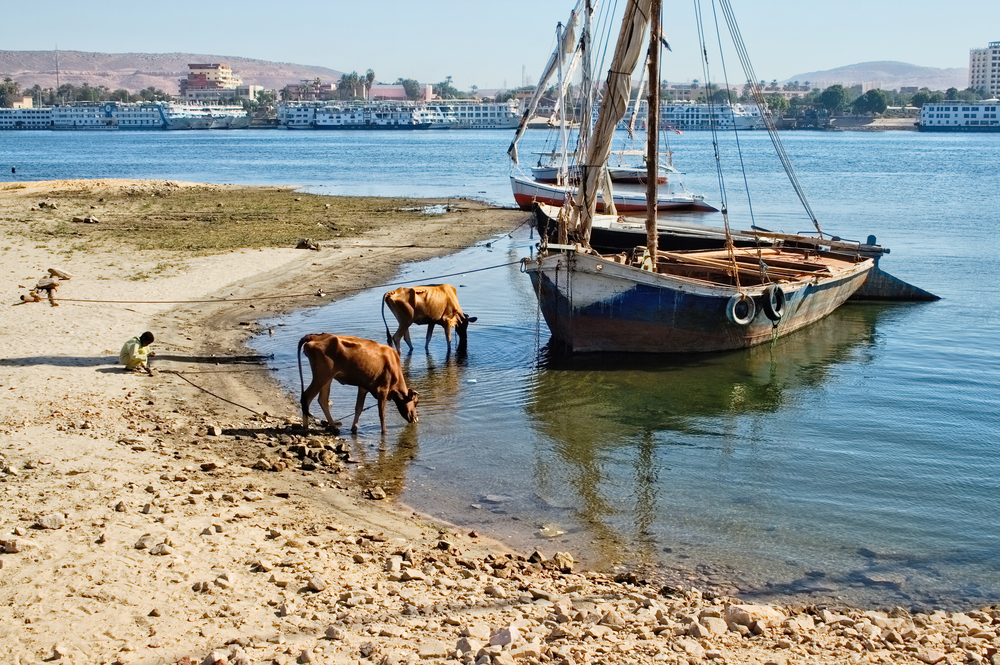
Egypt’s Anti Protest Law: Legalising Authoritarianism – Al Jazeera
Egypt’s Press Syndicate Under Fire – Al Jazeera
Can Egypt’s Currency Devaluation Boost its Economy? – Al Jazeera
Egypt Unearths 7,000-year-old Lost City – The Guardian
Sugar Shortage and Soaring Food Prices Fuel Discontent in Egypt – The Guardian
Egyptian Authorities Ban Feminist Mozn Hassan From travelling to Beirut – The Guardian
Egyptian Girl Dies During Banned Female Genital Mutilation Operation – The Guardian
Treating Battered Horses in the Shadow of Egypt’s Pyramids – NY Times
How to Rescue Egypt – Washington Post
Don’t Reward Egypt for Torturing Innocents – Washington Post
The Coptic Christians of Egypt – CBC
The Truth About Egypt’s Revolution – Wall Street Journal
Egypt ‘Worst for Women’ Out of 22 Countries in Arab World – BBC
Egypt Adds Medicine Shortage To List Of Worries – Yahoo News
Egypt’s Population Increases 1 million in 6 months – Egypt Independent
Egypt’s Tourism Industry is Still Reeling but Hope is on the Horizon – The Guardian
Project Options:
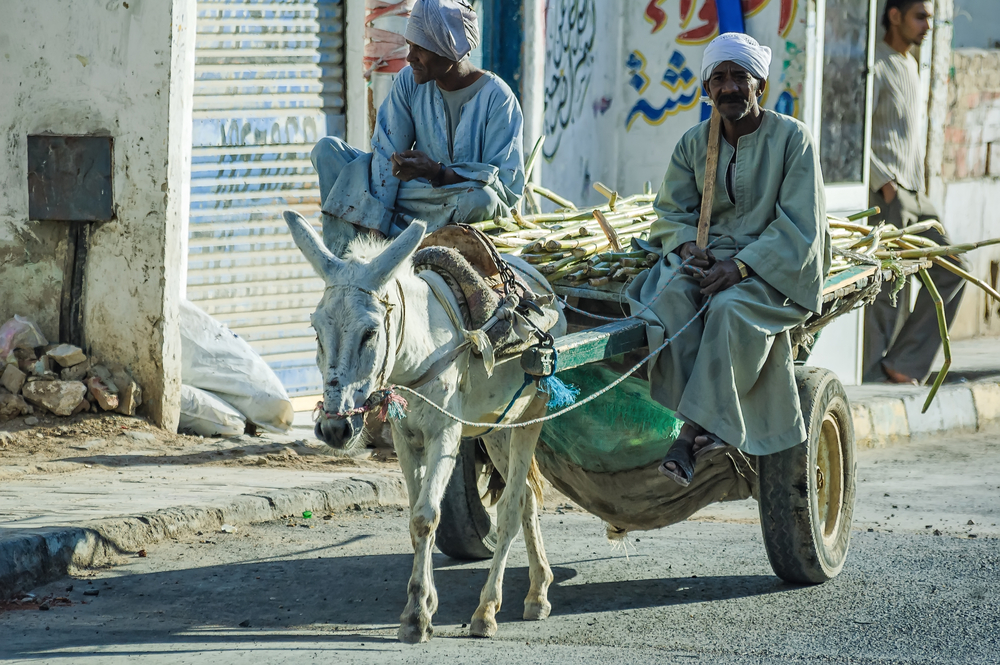
Ancient Egypt
When people think of Egypt the pyramids leap to mind and we’re off and running in our imaginations exploring one of the oldest and most enigmatic civilizations in the history of the world. If you’re headed to Egypt then it’s almost certain that you’ll spend some time visiting the archeological sites and museums. You’ll find it’s like drinking from a fire hose, there is so much to learn. Pick one or two topics and dive a little deeper. Consider site visits, deeper reading, and creating some video content narrating what you have learned.
Possible topics include:
- Pre-history in Egypt
- Upper and Lower Kingdoms
- Unification of the two Kingdoms
- Choose a Pharaoh and study his life and accomlishments
- The building of the pyramids
- The excavation of the valley of the kings
- The construction of one or more of the temples (compare and contrast?)
- Transportation in Ancient Egypt
- The arrival of the Romans
- Roman Egypt
- Agriculture and industry in Ancient Egypt
Papyrus
Papyrus is the oldest form of paper making in the world. Many of the scrolls have survived in very good condition. A number of them are on display at the Egyptian Museum, in Cairo. Making papyrus is not a dead art. It is still practiced by artisans and there are schools set up to teach people to make and paint them. Much of what is sold to tourists is not actual papyrus, made traditionally from reeds, but is made of banana plant fiber. If you can get two pieces next to each other the difference is obvious.
Spend some time studying the ancient art of papyrus, the making of the actual paper, not the hieroglyphs on them. Visit a papyrus museum or artisan shop where you can see the process in action and perhaps participate. Ask questions about the evolution of the process from ancient to modern times. Perhaps a video of the process and would be an interesting way to record what you have learned.
Women of Ancient Egypt
While the narrative of Ancient Egypt is largely driven by men, there were several notable exceptions in strong women who rose to prominent political roles in the country. Choose one and study her life and accomplishments deeply. How did she change the course of Egyptian history? What legacy did she leave?
Female Pharaohs:
- Nitocris
- Sobekneferu
- Hatshepsut
- Neferneferuaten
- Twosret
Other notable women:
- Nefertari
- Nefertiti
- Cleopatra
- Tiyi
Don’t stop with the lives of the famous royal women. Perhaps even more fascinating is the roles of ordinary women in Ancient Egypt. What was life like for them on a daily basis? What roles and work did they take on in the kingdoms? Where did they exercise the most power?
You might like to investigate:
- Marriage
- Childbirth
- Economics (employment)
- Political roles
- Arts and crafts production
- Agricultural involvement
Heiroglyphs
For centuries the key to translating the hieroglyphs was missing. Archeologists were left guessing. Now, the code has been cracked and we can read the stories of the ancient kingdoms and learn more about the history, as well as the mythology of the ancient world.
How was the hieroglyphic code cracked? Who was responsible? What have been the major discoveries as a result? How are the hieroglyphs read? (Right to left, left to right, up and down?) Spend some time studying the basics and then produce a short video guide for other travelers, filmed on site, of course!
The Nile
Most people, when they think of the Nile, think of Egypt. But this river actually runs all the way up from central Africa. It’s called the upside down river because it runs from south to North. The Nile is, and always has been, vital to the development of Egyptian life and culture.
Why is that? Examine the Nile and it’s impact on the region. Take a trip on the Nile if you can (I recommend a dhabyia over the big river cruisers) and experience the magnificence of this river first hand.
Why was the Nile important in ancient times? Look at it from the perspective of transportation, agriculture, architecture, and economics as well as the political perspective. How did the Nile impact taxation in ancient times and how was this calculated?
Why is the Nile important today? How has the water usage changed, and how has it remained the same? Examine the ecology of the Nile from a conservation perspective. What impact has development had on the river itself? What are the challenges facing the communities along the Nile? How are they facing them?
The Evolution of Islam in Egypt
Since the 10th Century Islam has been the dominant religion in Egypt. The Shia caliphate made Cairo their capital. Ottoman Rule combined faith and state. In the 18-1900s some of the governments worked to limit the political clout of Islamic leaders. However in 1980 Islam was declared the state religion and Egypt is, once again, a Muslim nation.
Investigate Islam in Egypt. Which sect is dominant and what effect does this have on daily life and politics? Are Egyptian laws driven by Islamic law? If so, what does this mean for the justice system and non-Muslims living under it? What is the situation for non-Muslims living in Egypt? Is there religious persecution?
In light of the revolution, how has Islam evolved in Egypt? What has been the impact of groups like The Muslim Brotherhood, and other more extreme groups?
Ancient Egyptian Gods & Mythology
Egypt has one of the richest religious and mythological traditions in the world. The gods and goddesses of Ancient Egypt played a prominent role in daily, as well as political, life. Kings appropriated their power by proving relation to them. Common people worshiped them in temples that are still being discovered and brought their taxes to the temples, blending political and religious life. The priests were powerful regionally as well as nationally.
Investigate some aspect of Ancient Egyptian religious life, according to your interests.
Possibilities include:
- Building the temples
- The roles of priests in worship
- The roles of priests politically
- Study the stories of an individual god or goddess
- The role of hieroglyphs in cementing religious influence and tradition
- Pharaoh worship
- Mummification and burial rites (kings vs. common people)
- Prayers and offerings to the gods and goddesses
- Belief structures around poly-theism vs. mono-theism in Ancient Egypt
- Akenatan and the introduction of monotheism
- Egyptian roots to later religious evolution
Building the Monuments
Egypt is famous for the Pyramids at Giza, Karnak, the Valley of the Kings, and the temples that dot the Nile. These are larger than life monuments to a religion and a political structure that has faded out of memory. Archeologists are still learning from the hieroglyphs and their excavations about how these giant structures were constructed, and by whom.
What do we know now? How were the pyramids and temples built? Who built them? Was the labor slave or paid? What do we know about the types of laborers required and the order of construction and ornamentation of the temples and tombs? What was used to do the excavation? The smoothing of the stone? The carving? The painting? Visit as many of the monuments as you can while you are in Egypt. Compare and contrast them in your journal. Take photographs and, if you’re artistic, make drawings of what you discover.
Coptic Christianity
While Islam is the national religion and the vast majority of Egyptians identify as Islamic, there is a significant etho-religious minority of Coptic Christians in Egypt. No one knows what percentage, exactly, but estimates range between 3-20%. These Coptic Christians are not related to the other main orthodox denominations and they pride themselves on the unbroken chain of patriarchs dating back to Saint Mark who is reported to have brought the gospel to Egypt in 42AD. The Coptic language, spoken primarily in liturgy now, is the closest link to spoken Ancient Egyptian language that exists.
Visit a Coptic church and a Coptic community. Try to discover what life is like for Coptic people in Egypt. What sorts of work do they do? What are their communities like within the larger Islamic community? Study their religious heritage from both a political and theological perspective. How is it that they have maintained clearly defined communities and a pure religious tradition when so many other Christian denominations have blended together over the years? What are the differences in Coptic belief from the other orthodox traditions (Roman Catholic, Russian Orthodox, Greek Orthodox)?
Aswan High Dam
Built at the turn of the last century, the Aswan High Dam separates Lake Nasser from the Nile. Visit the dam and talk with the locals (some of them will have stories passed down from their grandfathers who helped build the dam).
The Aswan High Dam was an engineering marvel for it’s time. Why was its construction so significant? How many people did it take to build the dam? How long did construction take? What were the ecological and cultural effects of building the dam? How did the damming of the Nile affect Nubian communities? How has the dam continued to affect the region? Examine the ecological, industrial, agricultural, economic, and political impacts. What was the original purpose of the dam construction? Has it accomplished this goal?
Suez Canal
The Suez Canal is another of Egypt’s engineering marvels. A 120 mile long canal connecting the Red Sea and the Mediterranean which allows boats to short cut between the Atlantic and Indian Oceans, trimming well over 4000 miles off of the journey.
When was the Suez Canal built, and why? Who runs it? What is the official policy on passage for boats during times of peace and war? How many boats per day can pass through the canal and of what size? Are there locks? What are the provisions for passing and tying up? How has the Suez Canal affected water transportation in the region? Politically, why is this an important transit point? Are there any disagreements or controversies remaining?
Problems & Solutions
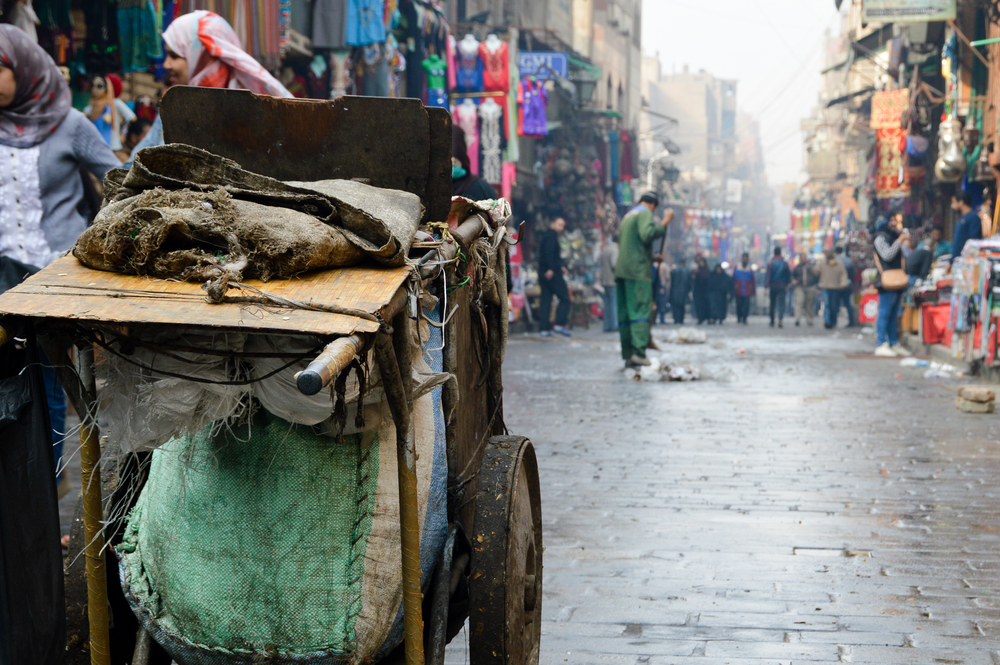
Female Genital Mutilation
Female Genital Mutilation was made illegal in Egypt in 2008 but remains a culturally prevalent practice, both in Islamic and Coptic communities. Although no one knows for sure, UNICEF estimates that over 90% of Egyptian women have undergone this practice, prior to 2008. Rates are slowly dropping.
What is FGM? Who supports it in Egypt? Who performs the surgeries? Do the girls themselves have a say in what happens to their bodies? What are the reasons given for performing FGM? What is the government doing to enforce the law against it? Is there any recourse for mutilated girls? Are there any support groups or survivor therapies available? Is there a difference between urban and rural communities on this issue? Find a success story of an organization or community that is making a difference for girls. What can we learn and apply from their success?
Women’s Rights
Women do not have equal rights with men in Egypt. The push to include Sharia law in the Egyptian legal code threatens to reduce those rights further. Take some time to examine women’s rights on the issues that matter to you.
Possibilities include:
- Marriage
- Divorce
- Rights to children
- Wage gap and equality in pay in the work force
- Educational opportunity
- Political involvement (percentages of women in positions of power)
- Abortion and fertility rights
- Healthcare and education
Tourism Decline
Tourism has declined massively in Egypt since the revolution. Part of it is the political upheaval, part of it is the plane crashes and hijacking of the recent five years.
Ask your tour guides about this downturn and what it has meant for them personally, for their communities and for the country at large. How many people visited Egypt in the year before the revolution? How many have visited in the years since? What does this translate to in terms of dollars (or EP)? What is the Egyptian government doing to bring tourism back? Do you think that these measures are working? Talk to other tourists in Egypt about their experiences in the country. Do you think that Egypt is safe to travel in, based on your experiences, or not? Aim for a nuanced answer, not a simple “yes or no.”
Economic Collapse
Since the revolution Egypt’s economy has not bounced back. Indicators are increasingly pointing towards economic collapse. The decision in November 2016 to float their currency and further devalue the Egyptian Pound on the international market is a desperate and necessary move.
What has put Egypt in this dire economic position? What was the economic situation before the revolution? Has the revolution helped, or hurt Egypt’s economy? What are the signs of a collapsing economy? How do these play out in Egypt? Are there any signs of recovery? What is the government doing to try to repair the damage and move Egypt forward?
Child Labor
Child labor is prevalent in Egypt. The production of cotton, mining, and domestic service are three industries where children are employed. What are others?
Why are children working at such a high rate in Egypt? What are working conditions like in the various industries? Is there a difference between cottage labor for a child, working in a family business, and industrial labor? What impact is this having on education? What is the official government policy on child labor? Has the government been enforcing child labor laws? If so, how, and to what end? Are there initiatives, either governmental or NGOS, to provide education and services to child laborers? What is working? Where is there more work to be done?
Islamic Militants
Egypt is engaged in an ongoing conflict with Islamic militants on the Sinai Peninsula. They are working to eradicated ISIS networks within the country and in November 2016 announced that a mass trial for 300 suspected ISIS militants. Militant and extremist groups within Egypt threaten to further destabilize the political and economic structure of the country.
What is the situation in Egypt right now regarding ISIS and Islamic State militants? Which areas of the country are in conflict and which areas are considered safe? What is Egypt’s position on the Islamic State and ISIS? How are they working to combat these organizations both domestically and internationally. Talk to some Egyptians. What is the local sentiment regarding extremist organizations? Are most Egyptians extremist in their thinking? How does the difference between the Sufi and Sunni traditions play into that? Which tradition is dominant in Egypt?
Cultural Assignment Options
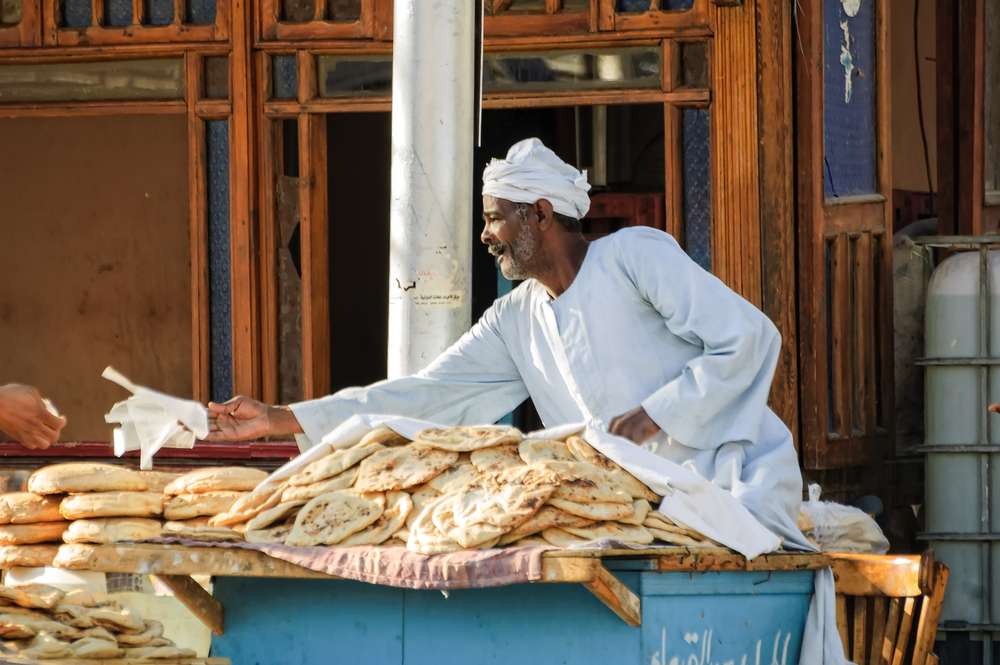
Food
Egypt may have the oldest food culture in the world. Try to find out something of the history of Egyptian cuisine. What was grown here in ancient times and what was on the tables of the Pharaohs as the kingdoms joined and then expanded. How did the Nile affect the available foods in ancient times?
Make a point of sampling as much Egyptian food as you can. The markets and street vendors are often the best place to start. If you can, eat with an Egyptian family around a local dinner table and eat whatever is served.
Make a record (or a video!) of all of the new foods you’re trying as you travel through Australia.
Meaningful Connections
What is a meaningful interaction? You get to decide that. In general, it should be an interaction in which cultural exchange took place and you learned something. Often this will be with a local person; sometimes it will be with another traveler.
Sometimes these interactions look like very little on the outside but are totally life changing on the inside. Other times, they are rock your world amazing from every angle. It could be a meal shared, an afternoon’s excursion, a discussion that opens your eyes in some way, a self revelation that happened without any words exchanged at all.
Spend a day with a local individual or family. Document your experience in photos, interviews and the written word. The best way to interact with locals is to just start chatting with them at markets, on tours or on the street. You can also ask other travelers if they have met anyone who has offered some insight into life in the country. If you are a family who have children attending a local school then have a party, invite a parent to coffee, basically just open up your home to new relationships.
Take a Class
There are many options! Don’t be limited by this list:
- Cooking
- Language
- Art or Crafts
- Papyrus making or painting
- Alabaster carving
- Hieroglyphic writing or reading
- Yoga
- Hire an Egyptologist as a tour guide
Museum Visits
Egypt has some of the most amazing museums with some of the world’s oldest human artifacts. The deep history of the country and the rich archeological heritage has resulted in mind blowing museum exhibits in the major centers of Cairo and Luxor. There are other smaller museums in smaller towns as well. As you travel, keep your eyes peeled for these and spend some time exploring them. Tour Egypt has a good list of the major museums with descriptions. Wikipedia has an even longer list with links to some of the museums’ actual websites.
Save your ticket stubs!
Archeological Sites
Of course Egypt is full of archeological sites of mind blowing proportions. No one comes to Cairo without visiting the Pyramids at Giza, but don’t stop there. Visit as many of the archeological sites as you can and spread your visits out across the country. There is a great deal of difference north to south and among the different eras of Egyptian history.
For an exhaustive alphabetical list of Egypt’s archeological sites click here.
For a breakdown of the major sites including video of each, click here. This might help you make choices if your time is limited.
Volunteer
Volunteering is a great way to get to know a local community and give back a bit to the places that you choose to travel. There are lots of ways to do this, both organized and arranged privately, as well as impromptu opportunities that will pop up.
If you’re looking for a list of volunteer options in Egypt, Volunteer Africa has a site dedicated to helping you find one. Please be advised that TAP is not recommending these, only presenting them as a list of possibilities. Vet your volunteer options carefully.
Live local
Get out of the hostel, rent a place in a local village, or do a homestay. Through websites like Airbnb it’s easy to find places to live locally. Consider a co-living space to develop community with like minded travelers while diving a little deeper and going a little bit more local. Cowork Inn, in Dahab, is one option.
Photo essay or a blog description of why living local was different than living in a hostel. How did this experience change the economics of your stay? What did you learn about the way locals live? What challenged you? What would you do differently next time?
Work Stay
Through an organization like WWOOF, HelpX, or Workaway you can arrange for an opportunity to work in exchange for your room and board in a number of capacities, from farm labour to hospitality. Lots of students make use of these experiences to lower the cost of their travels, while at the same time learning valuable skills or “trying out” various career areas that interest them.
Request feedback in the form of a short evaluation that can be used later for a CV or reference
Public Transportation Project
Take as many types of public transportation as possible.
Taxis in Cairo are an adventure. Ride a horse or camel into the pyramids at Giza, take a carriage to the temple of Edfu, cruise up the Nile on a dhabyia (avoid the big river cruise boats), use the foot ferries across the river at Aswan or Luxor, like a local. Take the overnight train from Cairo to Luxor or Aswan. Ride in a hot air balloon over the valley of the kings. Sail in a feluca on the river.
Challenge yourself to take every type of public transportation available while you are in Egypt. Create a photo essay or videologue of your adventures. What did you learn?
Attend a Religious Observance
Egypt is, on paper an Islamic state. However, there is a deep and older root of Coptic Christian belief in the country. This has long been a point of contention and strife as the two religious factions struggle against one another. There are other very small minorities of protestant Christians, and other religions tucked in around the margins. How does Islam shape the face of modern Egypt? What are the outward markers of religious influence in the country? What is it like to practice a minority religion in Egypt? Take some time to attend various religious observances and see what you can learn. Don’t be afraid to ask questions. How does the religious climate in Egypt compare with what you grew up with?
How to Create Your Own Course Work
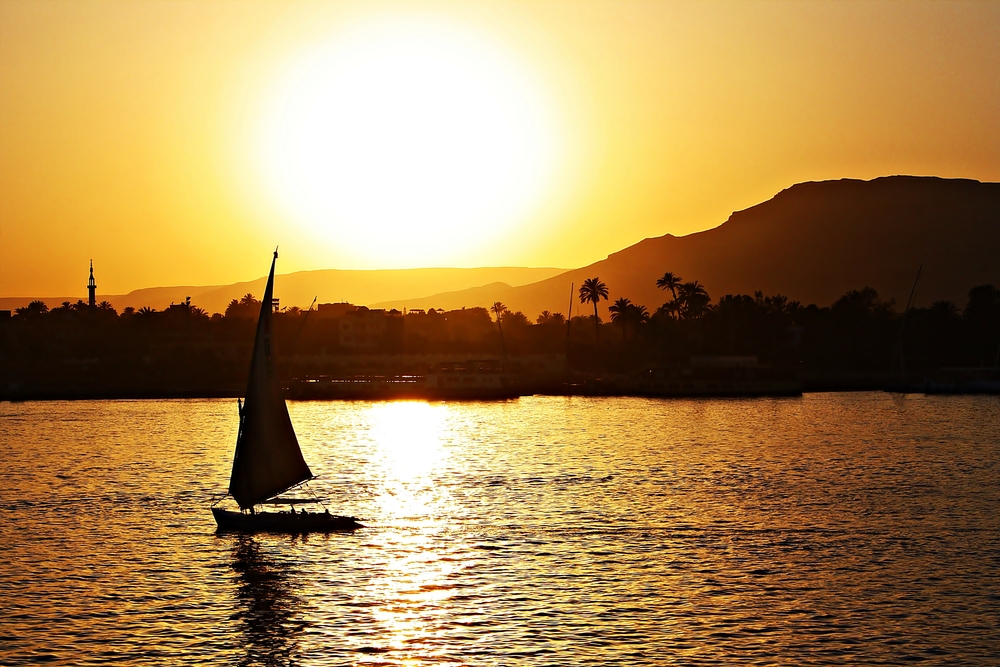
Ask
Learn to ask for what you want. If you meet someone interesting, ask them to teach you. Ask them for an interview. Ask to shadow them for a day or a week. You’ll be surprised at how eager people are to share what they know and teach when someone shows actual interest. Learn to ask questions. Learn to take social risks by putting yourself out there as a learner.
Plan
You have an idea or an interest. Something surprises you on your journey and all of a sudden you have a burning desire to know more. Plan your attack:
- Narrow your field of study to a particular question or topic.
- Compile resources: Look for teachers. Who knows what you need to know? Or who can you interview to learn more? Are there books or videos on the topic you’re interested in?
- Quantify it. How will you demonstrate what you have learned? A research paper, a video project, a photo essay, through art or music, a blog post, a published piece, an interview series, a mini documentary or do you have some other idea?
Produce
Produce a quality piece of academic work that reflects your experiential learning. The whole key to quantifying outside the box learning is to translate it into something that reflects the value of what you learned and how it contributed to your overall educational process.
Perhaps this will be as simple as a traditional research paper, depending on the depth and length of your study this could be as short as three pages or as long as a dissertation. Maybe you’ll produce a video for YouTube, or something grander, like a mini-documentary. Perhaps you’ll do something concrete instead, an art, or community action project and you’ll tell the story through a photo essay, or a series of blog posts. The possibilities are limited only by the resources you have at hand. Get creative. Think outside the box and truly experience your education.
Do You Have Anything to Add to This Resource Page?
We’re actively seeking to grow these resources in an open-source spirit. Please email jenn(at)bootsnall(dot)com with your edits or submissions of new information or materials.
Thank you!
Photo Credit: Sergei Butorin / Shutterstock.com, Sergei Butorin / Shutterstock.com, erichon / Shutterstock.com, Christophe Cappelli / Shutterstock.com, Panu Kosonen / Shutterstock.com
